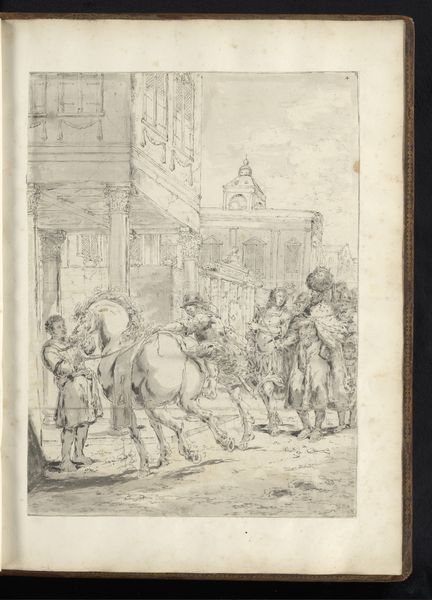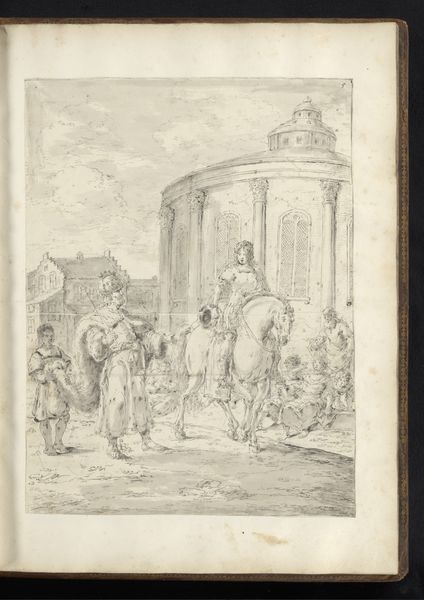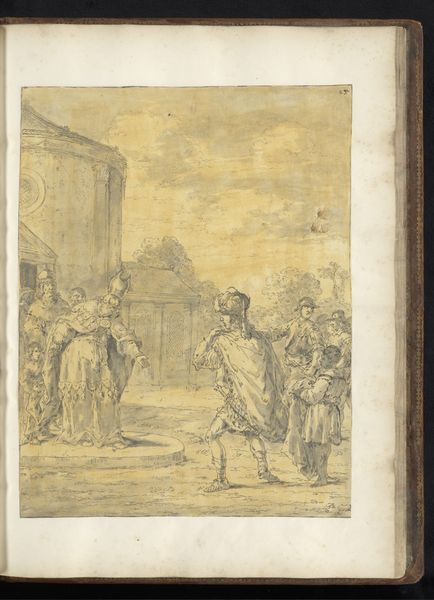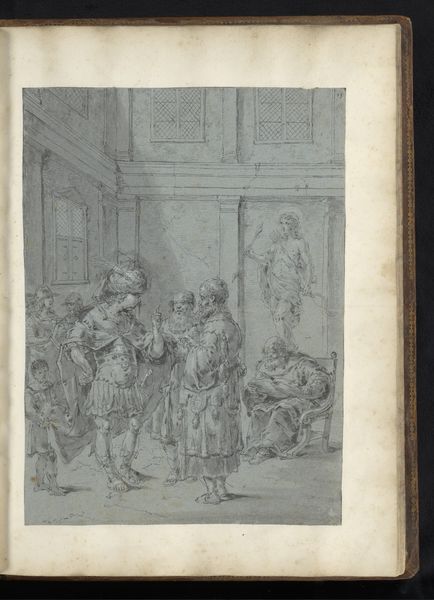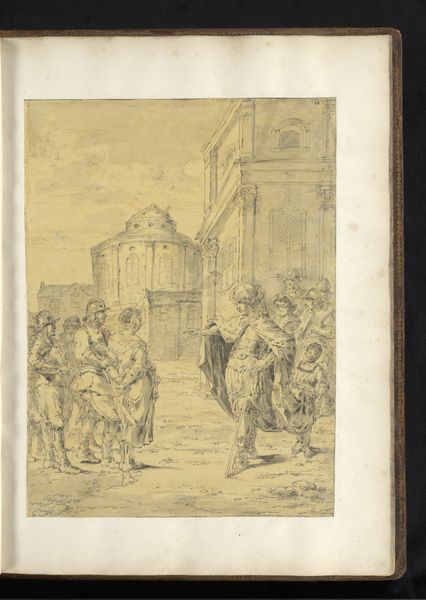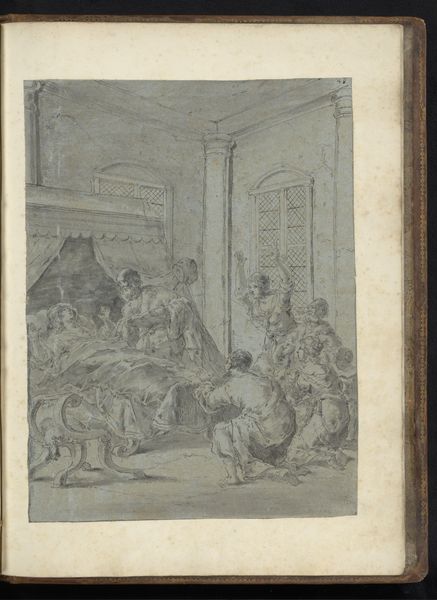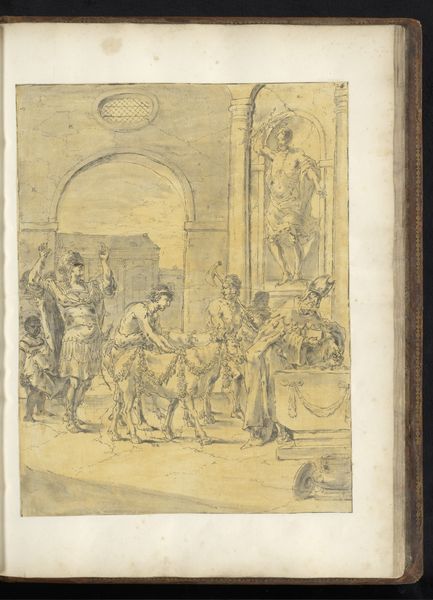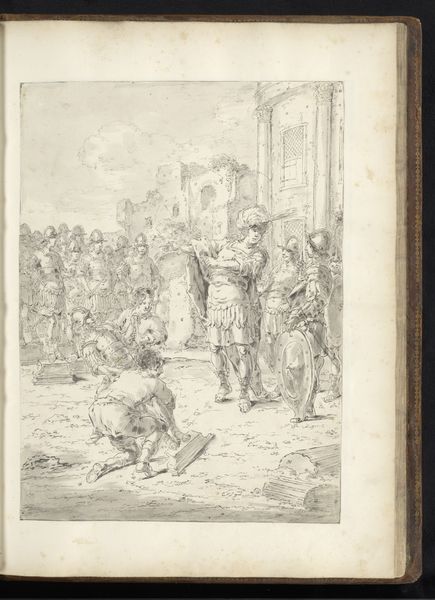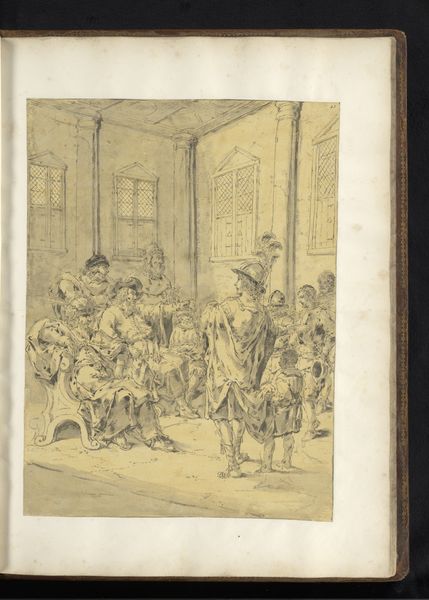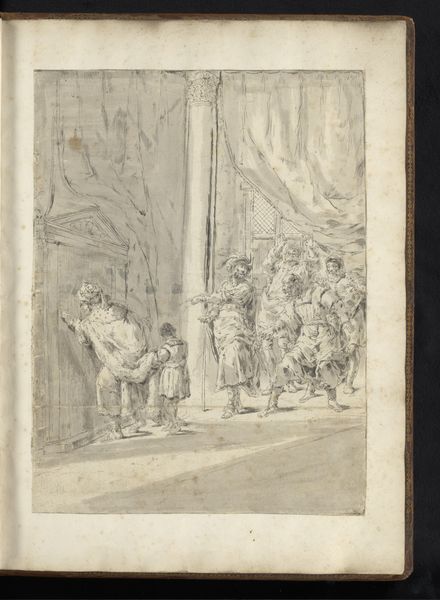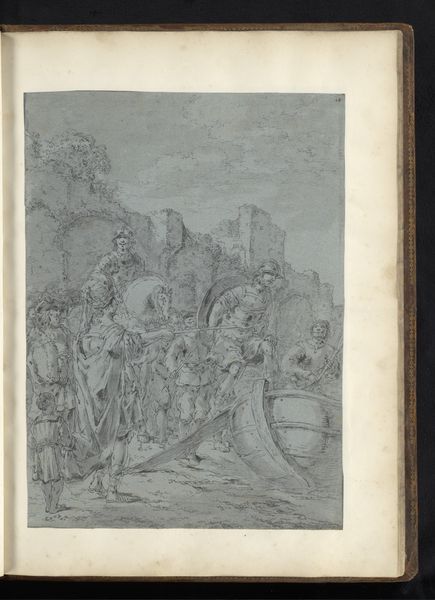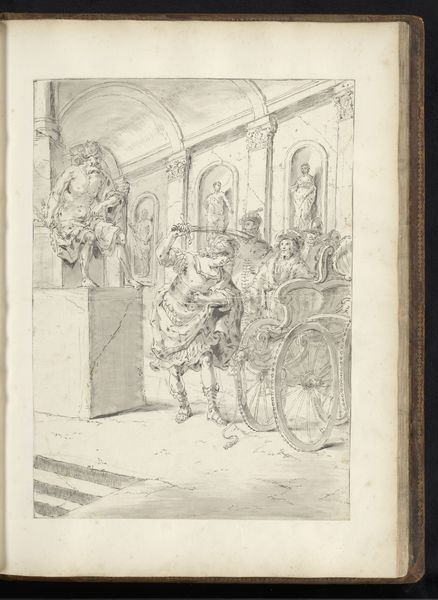
Alexander de Grote wordt omhelst en gekust door zijn vader c. 1655 - 1665
0:00
0:00
drawing, paper, ink
#
drawing
#
narrative-art
#
baroque
#
figuration
#
paper
#
ink
#
history-painting
Dimensions: height 412 mm, width 307 mm
Copyright: Rijks Museum: Open Domain
Curator: Here we have Leonaert Bramer's drawing, "Alexander the Great is Embraced and Kissed by His Father," created circa 1655-1665. It’s currently held in the Rijksmuseum. Editor: Well, immediately, what strikes me is the overwhelming greyscale; the almost frantic line work captures such a raw emotion within what is seemingly a grand historical tableau. Curator: The formal qualities really enhance the reading, wouldn't you say? The dynamic composition and skillful use of light and shadow direct the eye towards the central figures. Observe the careful articulation of forms, from the architecture to the folds of fabric. Editor: Absolutely. The materials themselves, ink on paper, suggest an immediacy, a document perhaps, related to preparation for something much larger. But that materiality lends itself to pondering: who made the ink? Who prepared the paper? This drawing, like many, masks complex economies of production. Curator: Perhaps, but consider the visual construction first. Bramer's command of space and perspective create a sense of depth. The classical architecture provides a symbolic backdrop. What semiotic interpretations can be unlocked? Editor: While those visual devices signify grandeur and authority, I am more interested in thinking about this artwork’s conditions. Was this produced for a wealthy patron or a personal reflection? What was the labor like for the draughtsman in Bramer’s workshop and did the economics behind artmaking influence what it represented? Curator: Of course. In Baroque art, a clear hierarchy emerges – and Alexander being embraced here illustrates notions of power transferal. Editor: But it's also a complex transferral inextricably bound to patronage, social status, material access, and more. Without recognizing that entire apparatus, we miss a fundamental aspect of this historical artifact. Curator: True enough; it is important to recognize different levels. On the one hand, an impressive composition – and a moving piece. Editor: Exactly. And if we see how a piece like this one involved not only a master’s vision but a multitude of skilled hands and raw materials extracted and manufactured…we realize history-making is much broader and more shared than we assume.
Comments
No comments
Be the first to comment and join the conversation on the ultimate creative platform.
